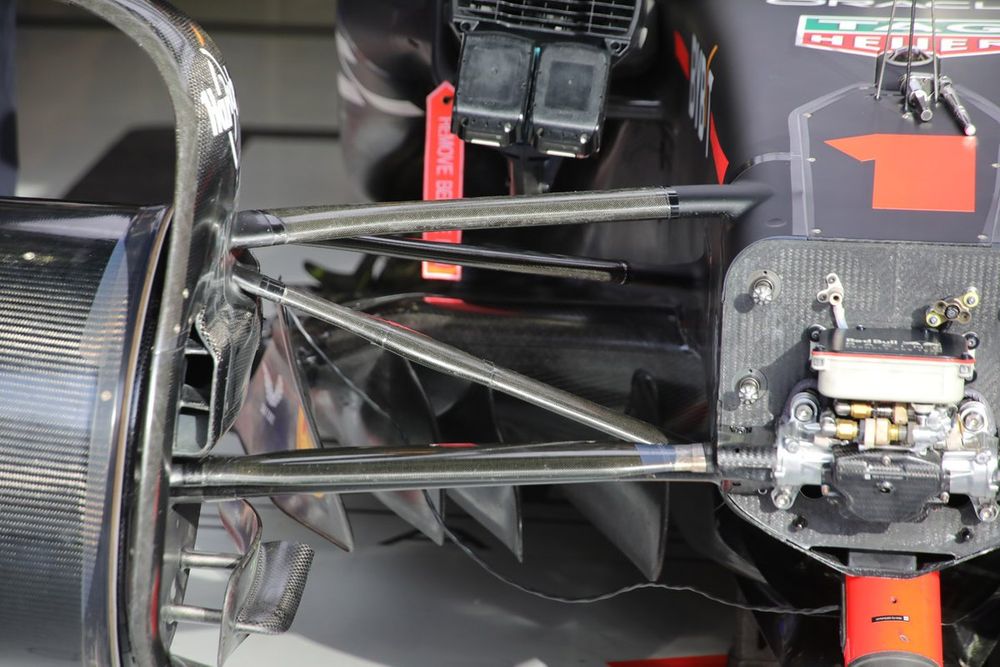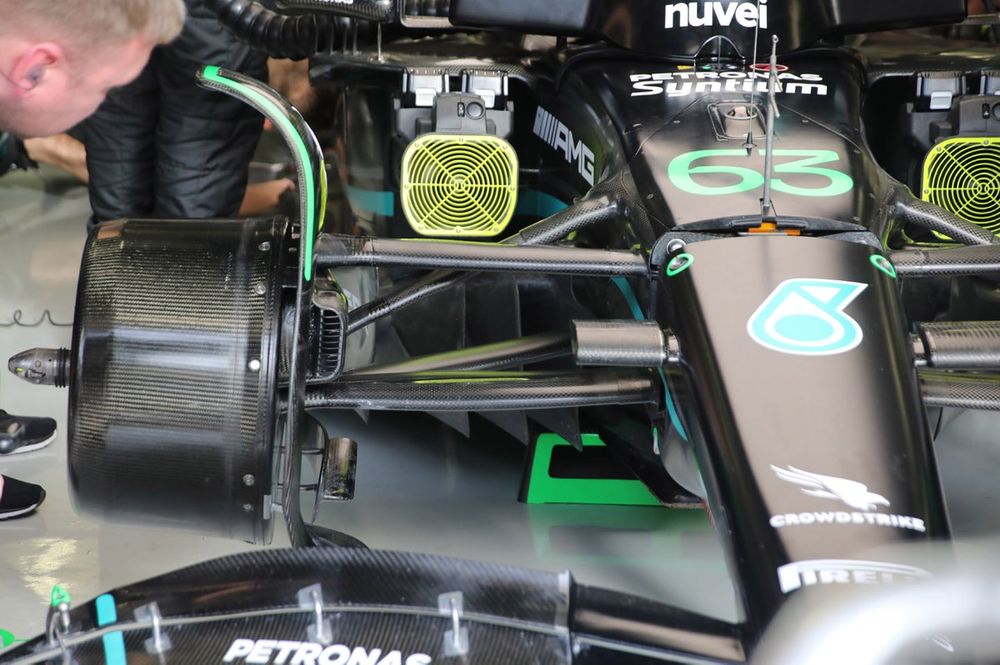A big talking point of Formula 1 car design is push-rod and pull-rod suspension.
But what is the difference between them, and why is it so important?
Mercedes push-rod front suspension detail
Photo by: Giorgio Piola
What’s the difference between push-rod and pull-rod suspension?
An F1 car’s suspension has an upper and lower wishbone – triangular-shaped carbon fibre bars that absorb the shock from the road – which essentially connects the chassis to the wheels.
Between the wishbones, both at the front and rear, is a suspension rod – either a push-rod or a pull-rod – that connects the wheel to a horizontal torsion spring. The torsion spring stores and releases energy, while twisting when force is applied to it, and that helps to keep a car stable over bumpy surfaces.
A push-rod mechanism sits high up on the chassis where a diagonal rod then connects it to a low point of the wheel. So, over bumps or kerbs the wheel pushes on the torsion spring and that causes the push-rod to go upwards and towards the chassis.
That is the opposite to a pull-rod. A pull-rod mechanism sits low on the chassis where a diagonal rod then connects it to a higher point of the wheel. This means every time the car hits a bump or kerb, the wheel pulls on the torsion spring which causes the pull-rod to go up and outwards from the chassis.
Both configurations have many advantages and disadvantages. It simply depends on what a team wants, because the suspension must fit the aerodynamic concept of the whole car as it plays a role in directing airflow towards the sidepod and other areas.
For example, a pull-rod has better weight distribution because everything is run closer to the ground as heavy components are mounted towards the bottom of the chassis. This is especially important on ground-effect cars because the lower centre of gravity helps to reduce drag, aid cornering ability and arguably provide a better aero performance.

Red Bull pull-rod front suspension detail
Photo by: Giorgio Piola
On the other hand, a push-rod is more practical as its local aerodynamic footprint is more favourable, which means the immediate aero around the suspension is cleaner.
Furthermore, having the suspension parts higher on the chassis means it is easier for mechanics to work on the car, because if the front suspension has a pull-rod layout it makes the area quite cramped and sometimes the floor needs to be removed for certain…
Click Here to Read the Full Original Article at Motorsport.com – Formula 1 – Stories…

